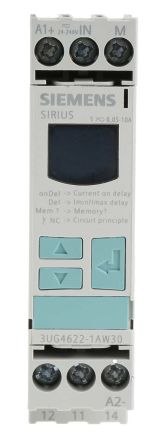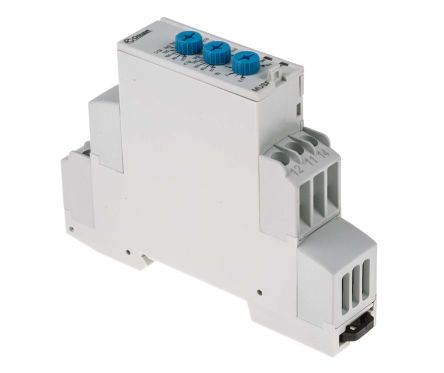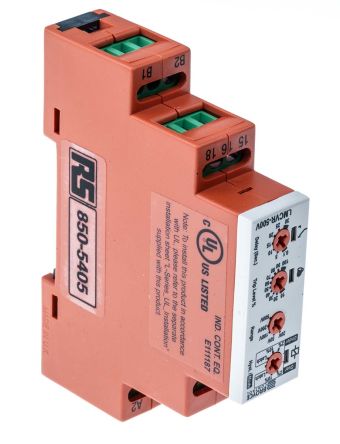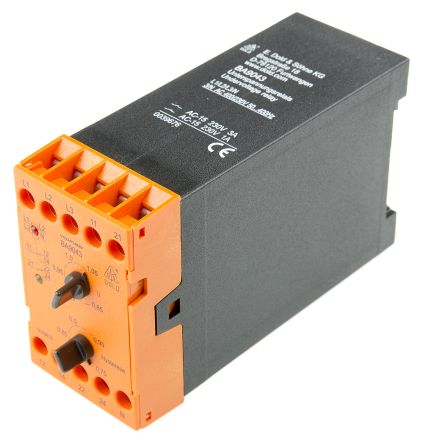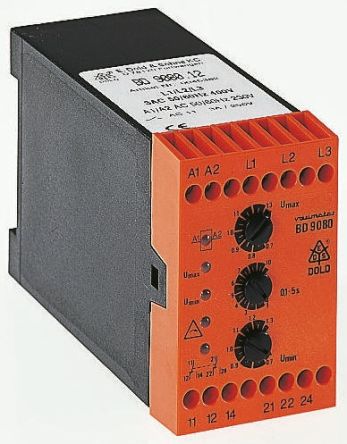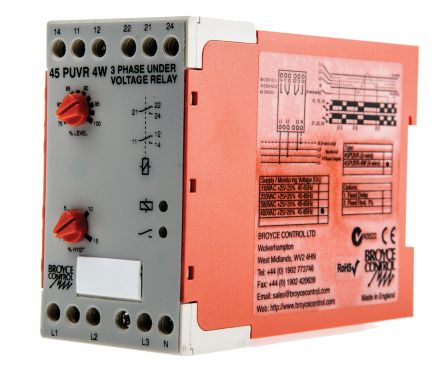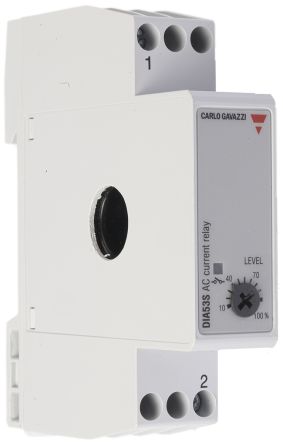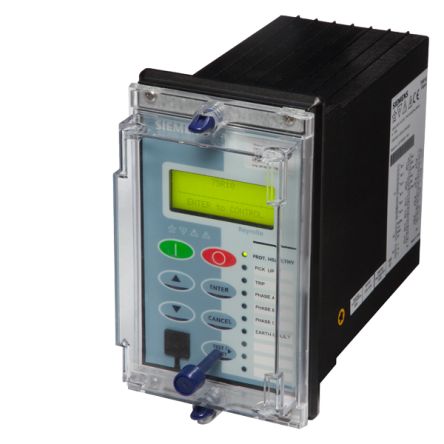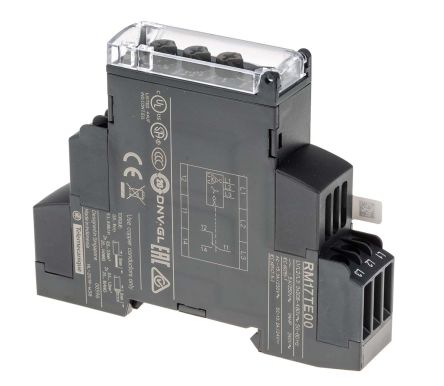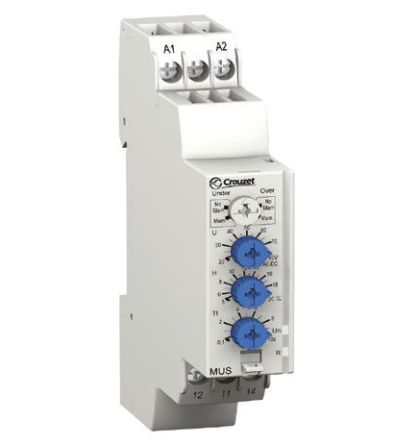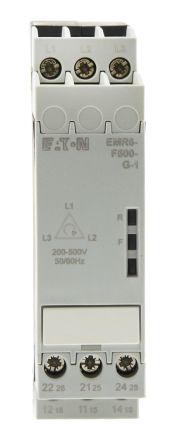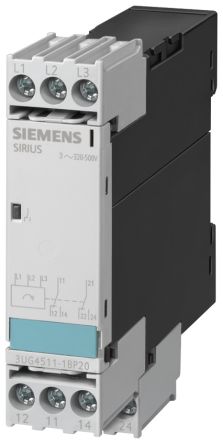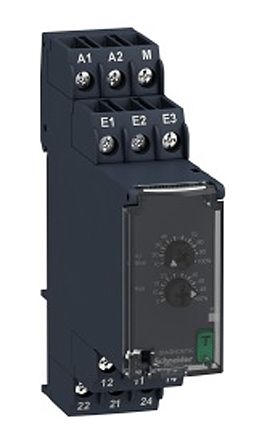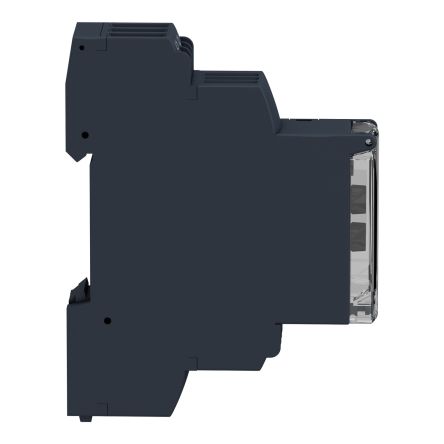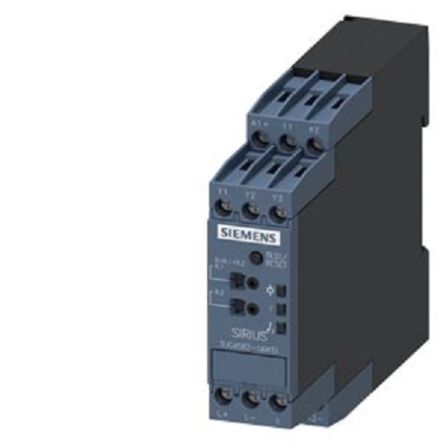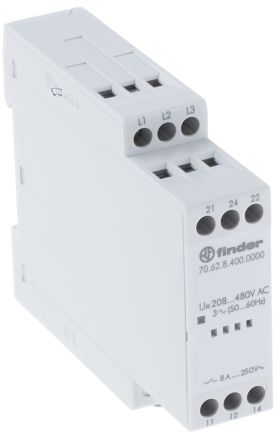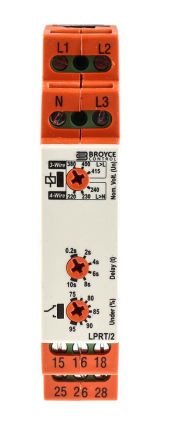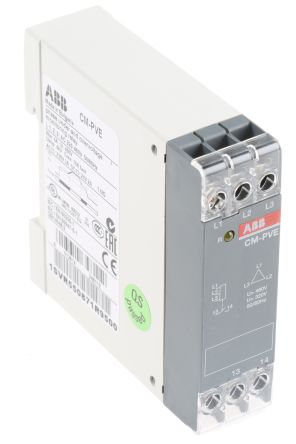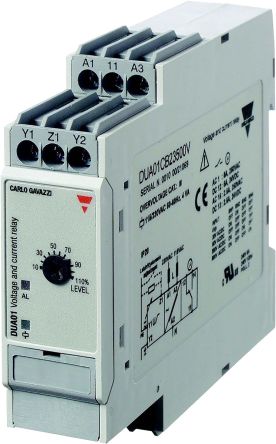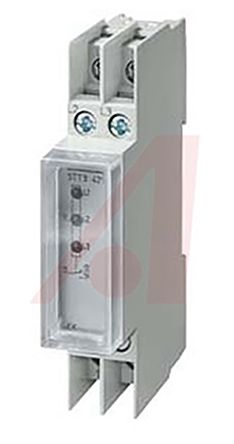- Automation & Control Gear
- Cables & Wires
- Enclosures & Server Racks
- Fuses & Circuit Breakers
- HVAC, Fans & Thermal Management
- Lighting
- Relays & Signal Conditioning
- Switches
- Batteries & Chargers
- Connectors
- Displays & Optoelectronics
- ESD Control, Cleanroom & PCB Prototyping
- Passive Components
- Power Supplies & Transformers
- Raspberry Pi, Arduino, ROCK, STEM Education & Development Tools
- Semiconductors
Monitoring Relays
Discover the essential role of monitoring relays in maintaining system integrity across various uses and industries. Explore RS Malaysia’s comprehensive range, which is designed to enhance safety and efficiency.
What are Monitoring Relays?
Monitoring relays are electrical devices that are used to monitor various parameters in a power system, such as voltage, current, temperature, and frequency, and trigger an alarm or action if the values go beyond a preset threshold. They are designed to detect abnormal operating conditions in a system and alert operators or take corrective action to prevent damage to equipment or injury to personnel. There are many types of monitoring relays, each designed to monitor a specific parameter. For example, a voltage monitoring relay is used to monitor the voltage levels in a circuit and trigger an alarm or action if the voltage levels go beyond a preset threshold.
Similarly, a current monitoring relay is used to monitor the current levels in a circuit and trigger an alarm or action if the current levels go beyond a preset threshold. Monitoring relays are commonly used in industrial settings, such as manufacturing plants and data centres, where reliable power is critical. They can also be used in residential or commercial settings to monitor electrical systems and equipment. In addition to monitoring parameters, some monitoring relays also have built-in communication capabilities, allowing them to send alerts or data to a remote monitoring system or operator. This can help operators quickly identify issues and take corrective action, improving system reliability and reducing downtime.
Types of Monitoring Relays
Monitoring relays are essential components in electrical systems, providing crucial protection and control. Let's explore the various types of monitoring relays and their specific functions:
- Voltage Monitoring Relays: Monitors voltage levels in power distribution systems to detect under-voltage or over-voltage conditions to protect sensitive electronic equipment.
- Current Monitoring Relays: Detects abnormal current levels to prevent overloads and short circuits, essential for motor control monitoring and electrical load management.
- Phase Monitoring Relays: Monitors multiple phase power systems to detect phase loss, phase reversal, and phase imbalance, crucial for protecting three-phase motors and equipment.
- Single Phase Monitoring Relays: Designed for single-phase systems, these relays monitor voltage and frequency in residential and light commercial applications.
- Frequency Monitoring Relays: Monitors power frequency to ensure stable operation of frequency-sensitive equipment like generators and motors.
- Temperature Monitoring Relays: Used with temperature sensors to monitor temperature levels and protect electrical equipment from overheating.
- Level Monitoring Relays: Monitors liquid levels in coolant tanks or reservoirs for electrical systems, preventing the dry running of pumps or overflow conditions.
By understanding these different types, you can select the appropriate monitoring relay for your specific application, ensuring optimal protection and performance of your electrical systems.
Where are Monitoring Relays Used?
Monitoring relays are used in a wide range of applications where it is important to monitor and protect electrical systems and equipment.
- Motor Control: Monitoring relays are commonly used to protect motors from damage caused by overloads, phase loss, or phase imbalance. They can also monitor the temperature of the motor and trigger an alarm or action if it exceeds a preset threshold. Within such alarm systems, monitoring relays can also help in monitoring the electrical functioning of sounder beacons.
- Power Distribution: Monitoring relays are used in power distribution systems to monitor voltage and current levels and trigger alarms or actions if they go beyond a preset threshold. One such example is how they can be used in laboratory power supply systems to ensure that power is distributed and that the power supply remains within safe operating parameters.
- HVAC: Monitoring relays are used in heating, ventilation, and air conditioning (HVAC) systems to monitor temperature and humidity levels and trigger alarms or actions if they go beyond a preset threshold. This can help ensure that HVAC systems are operating efficiently and effectively.
- Lighting: Monitoring relays are used in lighting systems to monitor voltage and current levels and trigger alarms or actions if they go beyond a preset threshold. This can help prevent damage to lighting fixtures and ensure that lighting systems are operating safely and efficiently.
- Renewable Energy: Monitoring relays are used in renewable energy systems, such as solar and wind power, to monitor voltage, current, and frequency levels and trigger alarms or actions if they go beyond a preset threshold. This can help ensure that renewable energy systems are operating efficiently and effectively.
At RS Malaysia, you can find a diverse range of monitoring relays from trusted brands such as Siemens, Schneider Electric, and ABB. These relays are suitable for various applications, offering reliable performance and versatility to meet specific monitoring and protection needs in different industrial environments.
The Application of Monitoring Relays in Different Industries
Manufacturing
In the manufacturing industry, monitoring relays are crucial for safeguarding machinery and ensuring consistent production quality. For example, for sensitive manufacturing processes such as pharmaceutical production, precision electronics assembly, and food processing, humidity monitoring relays are also commonly used to maintain optimal environmental conditions.
Power Generation
Monitoring relays are vital in power generation for maintaining system stability and safety. In power generation, phase monitoring relays and single-phase voltage monitoring relays are used to prevent phase loss and ensure voltage stability, which is critical for an uninterrupted power supply. Additionally, current-level monitoring relays play a key role in monitoring load currents, protecting generators from current surges and faults.
Oil & Gas
In the oil and gas industry, the reliability of monitoring relays is paramount. Current monitoring relays are often used to ensure that the electrical and mechanical systems operate within safe limits, preventing hazardous conditions. Meanwhile, single-phase monitoring relays and motor control monitoring relays are employed to monitor pump operations and maintain the integrity of drilling equipment.
Transportation
Monitoring relays enhance the reliability and safety of vehicles by ensuring electrical components operate within their designed parameters. For example, single-phase voltage monitoring relays are crucial for the electrical systems of vehicles and infrastructure, ensuring voltage stability. Additionally, current monitoring relays help in monitoring the electrical loads in vehicles, preventing potential malfunctions that could lead to operational disruptions.
Building Automation
In building automation, monitoring relays ensure the efficient operation of HVAC systems and other critical building management systems. Humidity monitoring relays are often used to control air quality and comfort, while current monitoring relays safeguard against electrical overload in building automation systems, contributing to safer and more sustainable building operations.
Benefits of Using Monitoring Relays
There are many benefits to using monitoring relays in your electrical systems:
Protect Your Equipment: Monitoring relays can protect and prevent damage to expensive equipment caused by abnormal electrical conditions, extending its operational lifespan and reducing replacement costs.
Improve Safety: By detecting and responding to potentially hazardous conditions, monitoring relays help prevent accidents and ensure a safer working environment.
Reduce Downtime: Early detection of electrical issues allows for proactive maintenance, minimising unexpected shutdowns and production losses.
Improve System Reliability: Continuous monitoring ensures consistent performance and reduces the risk of system failures.
Improve Energy Efficiency: Monitoring relays can optimise energy consumption by detecting and correcting inefficient operating conditions.
Ensure Compliance with Standards: Monitoring relays help systems operate in line with industry standards and regulatory requirements for electrical safety and performance.
Achieve Greater Cost Savings: By preventing equipment damage and reducing maintenance needs, monitoring relays can significantly lower long-term operational costs.
Enable Data Logging and Analysis: Advanced monitoring relays come with data logging capabilities, enabling trend analysis and predictive maintenance.
By implementing monitoring relays in your electrical systems, you can take a proactive approach to ensuring reliability, safety, and efficiency in your operations.
Related links
- Phoenix Contact Current 1 Phase, SPDT
- Schneider Electric Current 1 SPDT, DIN Rail
- Siemens Current Monitoring Relay SPDT
- Schneider Electric Current Monitoring Relay SPDT
- Siemens Current Monitoring Relay SPDT, DIN Rail
- Omron Current Monitoring Relay SPDT, DIN Rail
- Siemens Current Monitoring Relay SPDT
- Siemens Current Monitoring Relay DPDT
